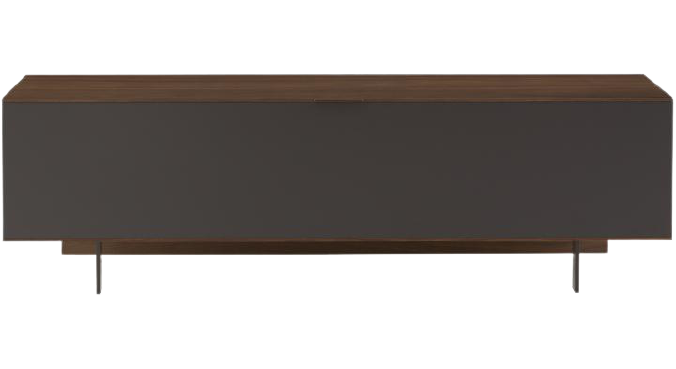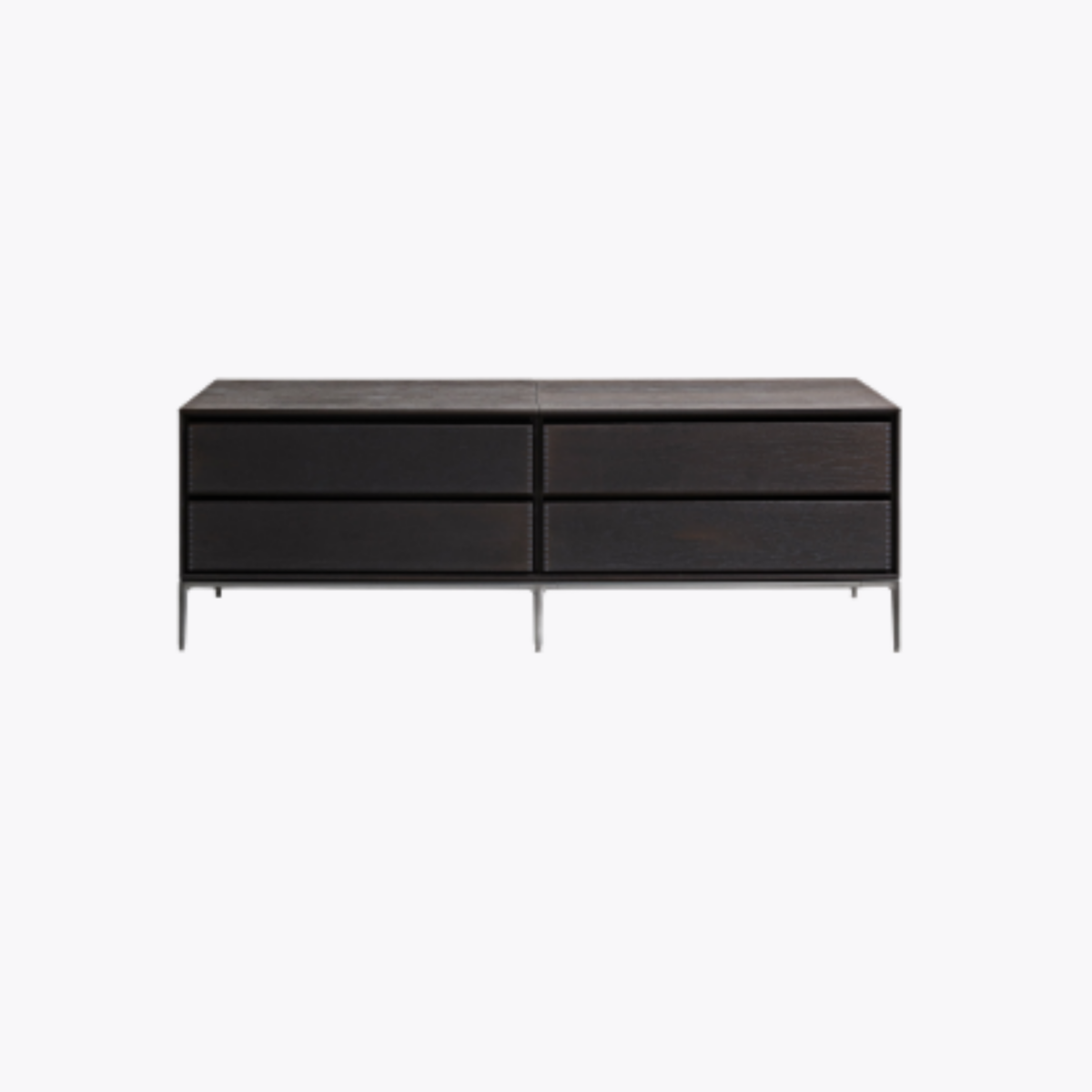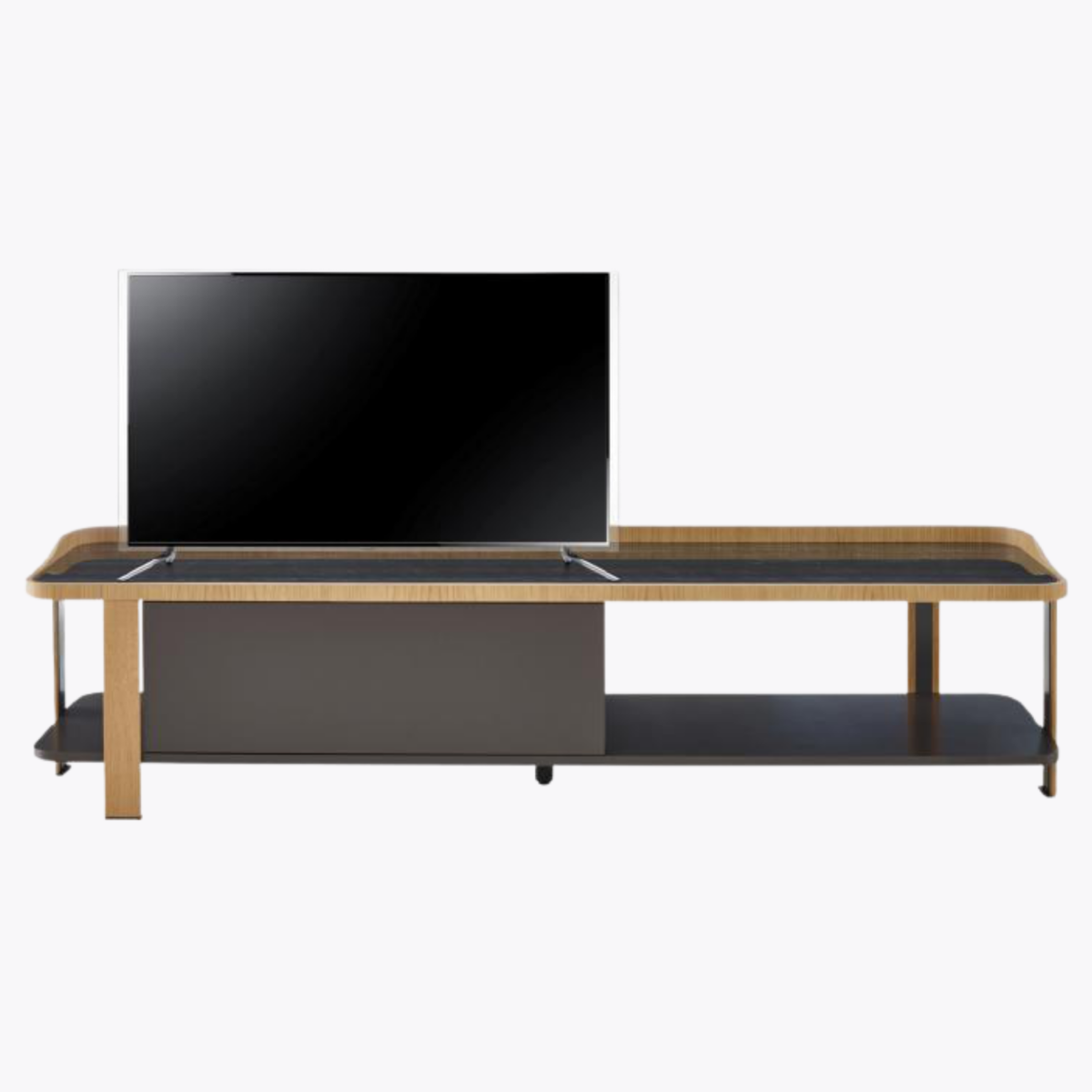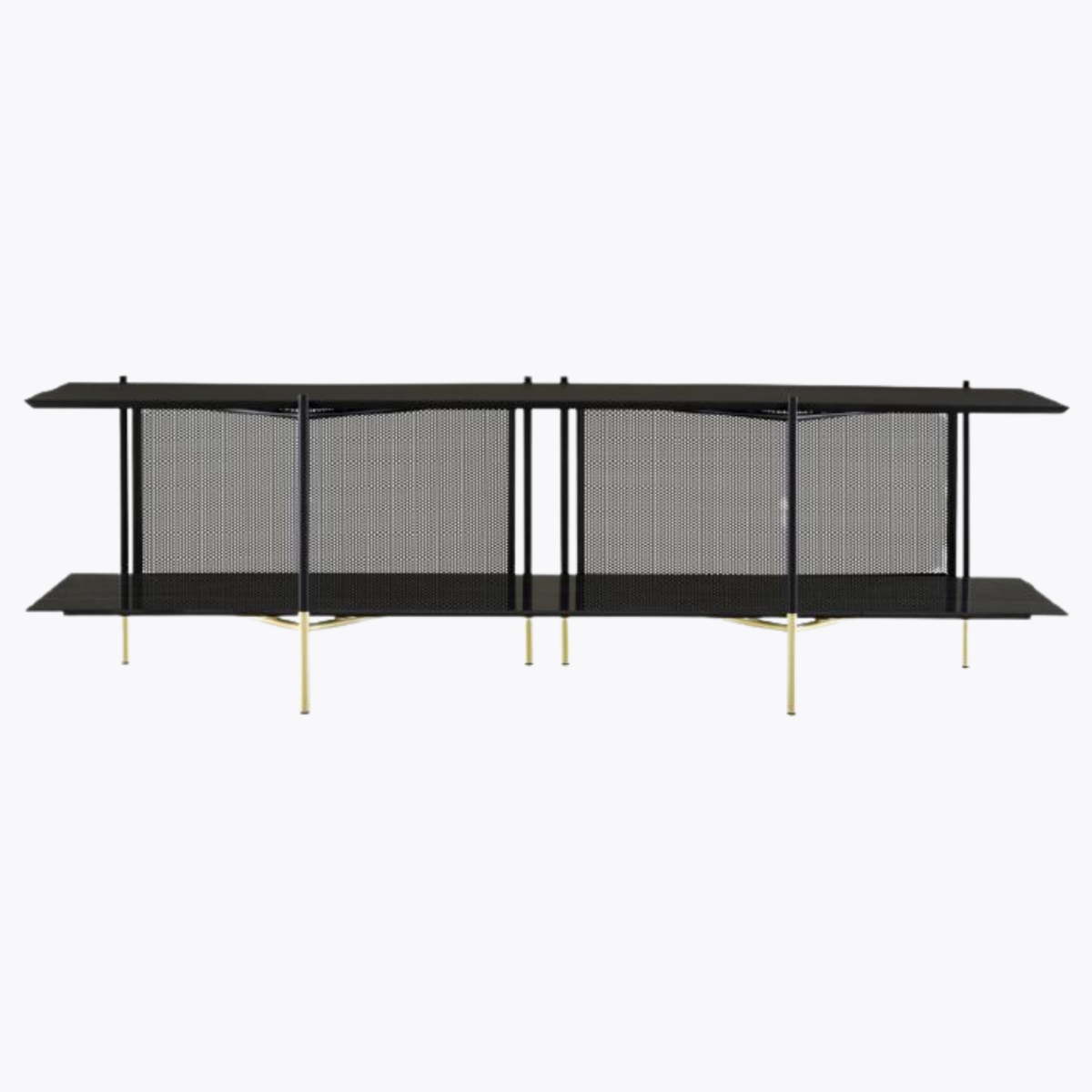These finishes transform a furniture system into a jewel with a unique spirit which draws the attention to the manufacturing details and a refined appearance. With Canaletto, putting together a composition will no longer be a puzzle or a series of difficult choices between function and aesthetics. Canaletto is an essential expression of a tranquil design response to the practical demands of modern life.”
Mauro Lipparini
An elegant modular range combining lacquer with solid wood. Note the quality of finish as embodied by the dark walnut lip which serves as a handle for the doors. It responds perfectly to contemporary requirements of a modular system, offering solutions for hi-fi and storage, plus shelving and a sideboard.
Items are created by juxtaposing elements. Once the structure is defined – H 50 (TV unit), H 75 (sideboard), H 145 or H 210 then W 67 or W 135 – it can then be completed in a number of ways. Shelving can be located in the lower section with a door above, or vice versa. One could also have full-height shelving, or even close the space completely. The end result of this is an undeniably original style with a powerful identity.
The shelving can be equipped with 2 or 3 optional illuminated vertical separations (predefined) to provide refined, indirect LED lighting (LED ribbon, glued in place, with a reflector which slides along the vertical panel).
The double doors have the unusual feature of having only one handle on the right-hand side. This touch of visual lightness is all part of the overall minimalism. The left-hand door may be opened via a finger-hold on the edge once the right-hand door has been opened.
Wooden elements incorporating slim aluminium shelves may be used to dress a wall. If these are extended towards the floor by an additional wall panel, a complete wall panel is created. A choice of 3 widths is on offer. These wooden elements may be complemented with illuminated LED strips which are located towards the top and across the width of these wooden elements.
With his sense of proportion, and with the rhythm and looks he has brought to it, Lipparini’s new modular range is both luxurious and high-end. Thanks to its simplicity, it is immediately comprehensible.
The lacquer colours have been selected with care : elements may be plain, in either plomb or perle lacquer, or these two lacquer colours may be combined with dark walnut veneer. Argile lacquer is always used in combination with dark walnut and interiors of chests in argile lacquer are always in plomb lacquer.
The doors come with a vertical solid walnut lip to both left and right. The shelves are perforated on the sides.
The subtle nature of the indirect LED lighting, and the addition of a glazed element (green-coloured, H-shaped) in the shelving unit reinforces the understated elegance of the alliance of materials.
Probably one of the best-finished ranges in our collections, this is a real work of cabinet-made art.

CANALETTO
“Canaletto’s modular nature opens up new horizons in terms of containing, but also displaying, showcasing, demonstrating…Open or closed modules and staggered vertical separations confer remarkable graphic lightness reminiscent of the tableaux of the view painter Canaletto.
The closed chests are given substantial and extremely significant character in the profiling, both horizontally and vertically, of the flap doors and drawers, thanks to the profiled uprights and projecting handles in ‘Canaletto walnut’.
Mauro Lipparini’s intensive activities in the field of industrial design encompass furniture for both home and office, textiles and other products created for numerous companies in Europe and Japan. In terms of architecture and interior design, he focuses mainly on residential and commercial buildings such as corporate headquarters, showrooms, shops, restaurants and exhibition spaces. In addition, he designs and produces advanced image and corporate identity systems ranging from graphics to editorial services and production.
The style of Lipparini, based on pared-down forms and clear, vigorous lines, the characteristics of natural minimalism, is heavily influenced by gaiety of spirit, and an intoxicating sense of aesthetic pleasure and creativity. Through the free use of colours, organic frameworks and original visual ideas, Lipparini broadens the palette of minimalism by converging instantaneousness and the power of this aesthetic quality in new era of maturity and a sense of wellbeing.
For Mauro Lipparini, design is the inevitable tension between aesthetics and function, art and application. He enables a product to become both agreeable and intriguing, a functional or superfluous object to be transformed into one charged with aesthetic sense and semantics, thus enriching the domestic landscape. He enables a space or its ergonomy to come alive with an ever-new relevance. Design engenders desires which will improve the quality of life, it enables us to view progress with increased involvement, it renders the understanding of function and therefore the perception of one’s habitat both passionate and agreeable.
Design is not the application of form like make-up, it is the object in itself, it is the tradition, the culture which enables people to have more or less indirect contact with the intellectually avant-garde by democratising art. It can be more or less poetic, constructive and considered, but it must always push the very limits of risk by forgetting habits and customs.
These considerations form the base of my work and, through simple, vigorous lines, graphic abstractions, compositions and purely geometric decompositions, I am ever on the trail of beauty and pleasure with a view to allying form and function. A natural minimalism of pared-down forms, paying particular attention to materials, colours, surfaces, to thick and thin, light and shade.


